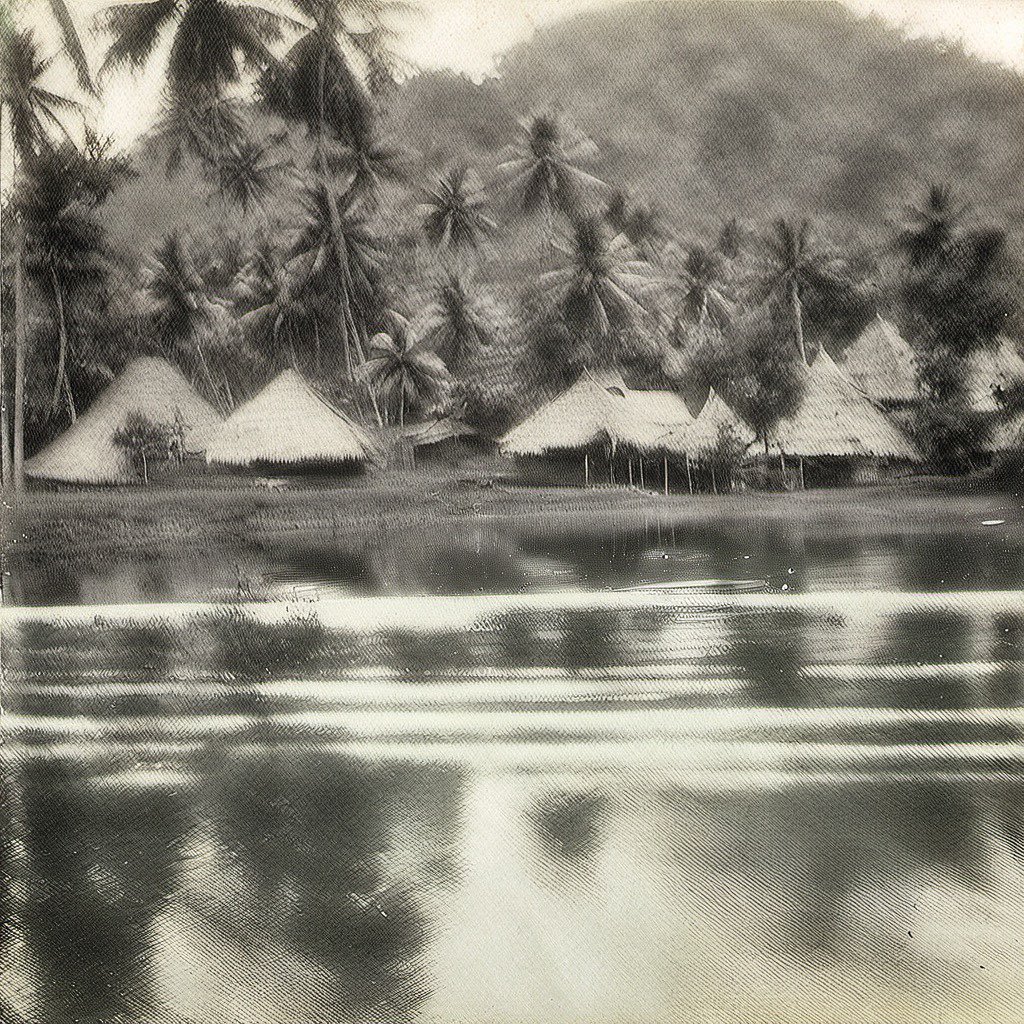
A distinctive group of Orang Laut known as the Orang Gelam, crafted a unique existence on boats, forming a remarkable "floating village." Specializing in fishing, selling food to visiting ship crews, and ferrying people across the river for a fee, the Orang Gelam carved out their livelihood amidst the river's ebb and flow. Originating from Batam island, they were brought to the region by the Temenggong of Johor and his followers in the early 19th century, establishing a settlement that thrived along the Singapore River. Serving as boatmen for merchant ships and with their womenfolk as fruit sellers on boats, the Orang Gelam created a dynamic presence at the mouth of the Singapore River and Kampung Saduying, also known as Kampung Glam.
Living in symbiosis with the Bugis establishment, or Bugis Town, the Orang Gelam potentially collaborated with Bugis shipwrights, contributing to ship repairs and engaging in the crafting of furniture and sails. The origins of the tribe's name, derived from the Gelam tree (Melaleuca cajuputi), remain a mystery, raising the question of whether the tree or the tribe inspired the nomenclature. The Gelam tree, a central element in their daily lives, exhibited diverse uses—from bark in mat making to timber for boat-building and firewood, fruits purportedly functioning as a pepper variant (Mercha Bolong), and leaves serving as a key ingredient for cajeput oil.
References :
Norshahril Saat(ED.), Wan Hussin Zoohri (ED.), Zainul Abidin Rasheed 2020(ED.) Beyond Bicentennial : Perspective of Malays : WORLD SCIENTIFIC PUBLISHING
Abdullah bin Abdul Kadir and A.H. Hill. 1985. The Hikayat Abdullah: The Autobiography of Abdullah Bin Abdul Kadir (1797–1854) An Annotated Translation by A.H. Hill. Singapore: Oxford University Press.










The possible location of the Orang Gelam village was identified by cross-referencing maps of the past and present. Fieldwork was conducted to understand the strategic location of the village. By leveraging current methods of generative AI (Stable Diffusion + ControlNet), we produced images of what the Orang Gelam village could have looked like.






